Scripting and Changing your Dreams - Turning Inception to Reality
The film 'Inception' written and directed by Christopher Nolan has awaken all sorts of issues and ideas about dreaming. Much has been written about it. The idea for the film was based on the concept of exploring the idea of people sharing a dream space — entering your own dream space and shaping it and sharing a dream. Nolan has admitted that Inception is similar to the basic ideas contained in the short stories by Jorge Luis Borges such as The Secret Miracle and The Circular Ruins. In The Secret Miracle on the night before he is to be executed by firing squad, the main character, Hladík, who is a playwright, prays to God and asks for a year in which to finish the play. When he is taken outside and lined up before the firing squad and the 'all fire' command is given, the scene freezes and he realises that his prayer has been answered (his secret miracle). He is given one year to complete the play. After the year he returns to the scene and time begins again and the volley from the soldiers' rifles kills him. In The Circular Ruins a wizard retreats a secret location (The Circular Ruins).
Inception
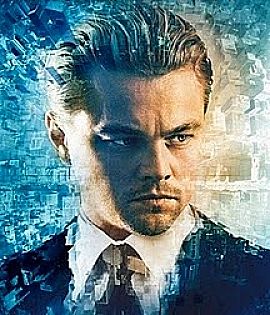
There, the wizard crafts a human being in his own dreams. Dreaming for longer and longer periods each day, the magician develops an educated young man in his dreams. The wizard calls upon the God of Fire to bring his dream to life in the real world. Fire agrees, as long as only the wizard will be able to recognise that the creation is not a real human. His creation can walk through fire unharmed, as it is not real. When the wizard walks into the flaming house of Fire, the wizard notices that his skin does not burn and he realises that he too is not real but only a dream, dreamt by another person.
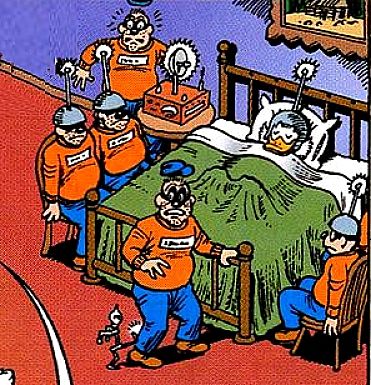
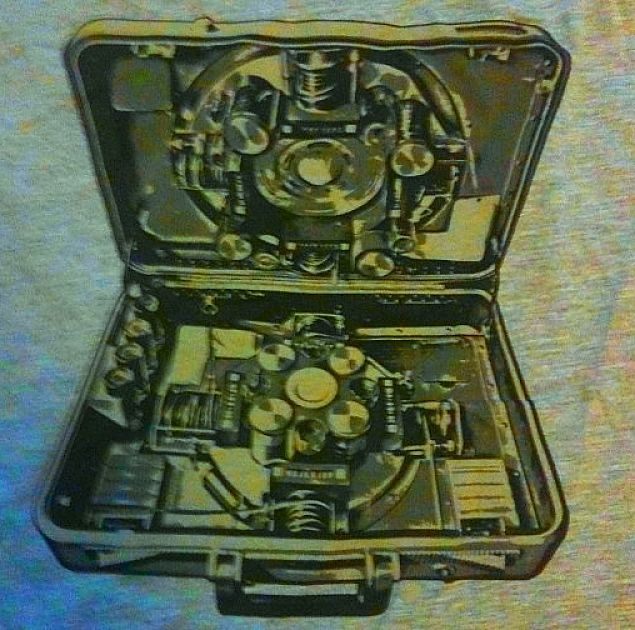
There are also obvious links with the Scrooge McDuck comic - 'Uncle Scrooge in The Dream of a Lifetime'.
The creator of the comic, Don Rosa, got the idea for that story from a French fan who in turn may have got the idea from the French film 'The Cell' (shown in the Cannes 1963 film festival) which had a similar plot. The French fan sent the idea to Rosa, about a month after 'The Cell' was shown in the cinemas, and Rosa was aprraently shocked by the similarity. The plot of the Scrooge comic is simply to steal Scrooge's money.
The story in the comic follows old Uncle Scrooge as his dreams are infiltrated using a dream machine, by the evil Beagle Boys who want to steal the combination of Scrooge's safe. Donald Duck is then also transported into his uncle's dream to force the Beagle Boys out, because if Uncle Scrooge wakes up while the Beagle Boys are in his dream, all would be doomed. Th concept and 'dream machine' boxes are quite similar.
The issues about the basic similarity of the concept and some of the details of the stories that are also similar have not been resolved (see this reference ).

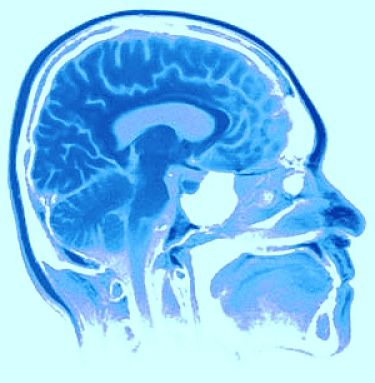
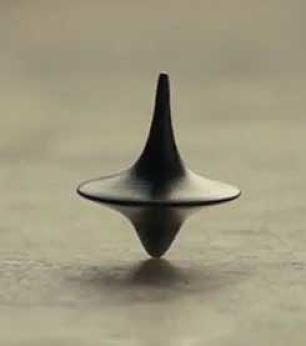
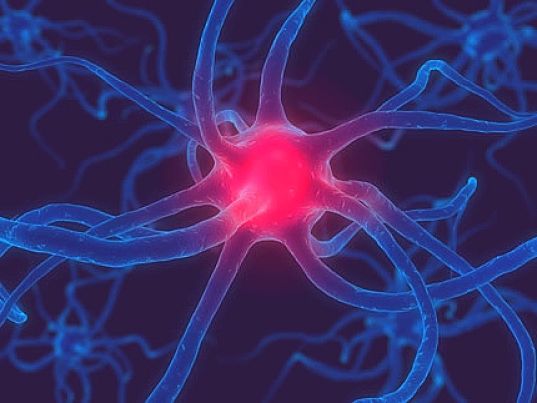
Nolan said that had first thought about these ideas as a teenager with the idea that you could wake up and then, while falling back into a lighter sleep, hold on to the awareness that he was dreaming, and then re-entering the dream as a 'lucid dream' that he could control.
In Inception, Nolan says that often when you are dreaming you do not know it is a dream. Only when you wake-up do you realize that strange things had happened that were clearly not reality. But if you are aware that you are dreaming, you can take charge of your dream.
Much of the intrigue of the film is built on the idea of not knowing what is a dream and what is reality and the use of various devices and methods to tell the difference and take control of your dreams.
In the film the device used to distinguish between dream and reality is the talisman or totem. It is physical features of the talisman - its weight, feel and gravity that are only known by the owner, and there is some unusual feature allows them to positively identify reality from a dream.
The distinctive features that can be tested by the owner are unknown by the one who sculpts the dream.
In the film Cobb's talisman is a little spinning top that used to belong to his wife Mal. If the top keeps spinning, Cobb knows he's still dreaming, because the laws of gravity don't have to be followed in dreams. The other talismans are a loaded die and the golden chess piece.
In this article we will examine how dreams can be changed or re-scripted and some other aspects of dreams and nightmares.
Turning Inception to Reality
Lucid Dreams
The Dutch psychiatrist Frederik Willem van Eeden first used the expression 'lucid dreaming' in 1913, to refer to dreams you have when you genuinely know that you are dreaming and can actively script or direct what happens in the dream. This can give you full control of your dreams, so that you can jump off of buildings, go into space, fly or do whatever your mind can create in the dream. You can therefore change the dream as it is unfolding, and you can re-enter the dream after you have woken up.
Lucid dreams generally happen during a normal regular dream when the dreamer realizes suddenly that she or he must be dreaming. The dream is then said to be a 'lucid dream', and there are various levels of how lucid the experience can be and how this can shape the dream experience.
At the lowest level, the awareness about the dream may be vague and the dreamer may not realize that the people, actions and events in the dream are not real and there is no risk when doing outrageous things.
At higher levels, when the dreamer is fully aware and confident that she or he is asleep, he or she can take complete and safe control over the actions and script of the dream. The control over what happens in the dream is not tight but rather loose - you will only partially be in control.
There is a lot of information on lucid dreams and some of the key points are discussed below.
How do you learn to have lucid dreams?
Firstly you can arrange your personal sleep schedule or patterns to help induce lucid dreams. It is about partially waking up and rejoining the dream, knowing the best time to do this and developing tests for whether you are dreaming or not. There are a number of strategies you can adopt to do it more reliably:
- Taking a nap a few hours after waking in the morning is the most common time to have a lucid dream, or partially waking early in the morning and drifting back to sleep and re-entering the dream
- Lucid dreams are strongly associated with REM sleep. REM sleep occurs more frequently just before the finally awakening. This means that lucid dreams usually occur just before waking up in the morning.
- A common technique involves waking up an hour earlier than usual in the morning, recalling your last dream, and going asleep again while thinking, "The next time I'm dreaming, I want to remember I'm dreaming." Lucid dreams occur most often in the morning just before awakening.
- There are various devices available to help you induce lucid dreams.
- Other techniques involve learning to test whether you are dreaming or not, when you are awake. If you do this you will develop a habit that will apply to your dreams as well. If you can learning to test whether you are dreaming each time you dream, you will know that you are dreaming and will have lucid dreams more often. You have the choice of how much control you want to exert. Sometimes you can be lucid and have only minor control of the script and outcome.At other times you may have strong or full control and can deliberately transform or change the course of events. Once the dream becomes 'lucid', dreamers usually try to do something clearly unreal or possible only when dreaming, such as flying, walking through walls or jumping off buildings.
Testing Whether you are Dreaming
To learn to make more of your dreams lucid, you have to be able to tell the difference between a dream and reality and you need something dramatic to happen or testing event that will trigger you to realise that you are indeed dreaming. You need something that triggers your conscious mind to wake up briefly, and to realise that you are dreaming. Reality checks can be used to provide that cue or trigger. If you practice reality checks during the day you will be more likely to do them when you are dreaming and so to experience more lucid dreams.
Some Reality Check examples are:
- When you jump off something, do you float back down rather than falling?
- When you read a sentence twice does it remain unchanged.
- Is your vision clear?
- Can you push your fingers through your hand or through walls?
- Can you read a clock or digital watch and see that the seconds are ticking?
- Can you do magical things such as flying, change the shape of things, or walk through walls?
- Do the light switches and other electrical devices work properly?
- Does your reflection in a mirrors look normal?
- What day is it and is your memory about recent events realistic?
- When you add two numbers is the answer correct ?
When you apply these tests (usually 2 or more) and realise you are dreaming the results can be astonishing as you can do all sorts of things. You will find yourself floating and flying, moving through walls and mirrors - the only limit is your imagination.
Dream Mastery and Scripting Your Dreams
Many people who have problems with nightmares are turning to imagery rehearsal techniques to change their dreams. Some therapists trying to help people with recurrent nightmares, say that bad dreams are simply a habit that you have to change. The method is controversial, because some people regard dreams as therapeutic and are concerned about the consequences of changing the dreams, or 'mucking about with them'. The method involves teaching people to "rehearse" or replay the dream while one is awake and to change a disturbing dream or a nightmare into a less threatening one - inserting a new story line into it, changing the ending. This involves teaching yourself how to change the dream. Computer games are constantly doing this - changing the story line. The outcome depends on what you do at critical branch points. Recent research suggests that this method can be very successful in helping people who have recurrent nightmares especially those who have suffered from some extreme trauma in their lives.
Dealing with Nightmares
Many dreamers find that nightmares arise from some sort of trauma in their life. The nightmares may persist for a long time after the symptoms of trauma have faded subside. The nightmare may be recurrent and cause long term problems for the sufferer or may develop and become more frightening. The nightmare may also be triggered to recur after a new life stress occurs.
Research has shown that imagery techniques and relaxation techniques can be used to help people develop new skills which can then be used to change negative themes of dreams and nightmares. People can learn to change their dreams by effectively and re-writing the distressing parts into more positive scenes and outcomes and can rehearse the new dream so that it eventually replaces the nightmare. These methods can also be used for re-scripting dreams which are undesirable or not wanted, but not necessarily traumatic, such as dreams that create anxiety about losing money, getting lost or being unprepared for exams or driving tests, etc.
The supporters of this approach suggest that you need to reinforce the switch by experiencing new feelings of freedom, confidence and empowerment with the new ending or story line.
Researchers suggest that it may help to write your nightmares down in a diary, practice relaxation exercises and have multiple rehearsals of the new story line. They suggest that you write down the old and new versions.
In 2008 a review in the Journal of Clinical Sleep Medicine noted that this method had become the treatment of choice for nightmares. It reported that imagery rehearsal therapy and exposure are effective at reducing nightmares; the methods also reduce other sleep complaints and mental distress.
These techniques can be used for dealing with Children's Nightmares by telling the child about the powers they have to change bad dreams to a good dreams.
What is the function of dreams?
Freud claimed that dreams highlighted our repressed desires. But recent research suggests that dreams help us process information about past and future events and affect our memory storage and processing. Some people claim that dreams can be prophetic, but there is little research evidence for this, despite the stories and dramas about it. Many people claim that dreams help us to solve problems. Although there is very little research supportig this claim, many people believe it. They say that if you sleep on a problem you will often wake up with the solution. However, much of the resolution may occur when you are still conscious, before you go to sleep. You may not be aware of the transition and when the processing actually occurred. Various studies have shown that dreamers often work through various different pathways, scenarios and outcomes for a topic in their dreams. However the solution may come when you are conscious, or semi-conscious and are staring to wake-up, rather when you are asleep. The process of resolving the issue may conscious without the dreamer realising it. Research has also shown that only about half of recalled dreams appear to be totally fanciful and unrelated to the events of the previous day and so are not primarily related to problem solving.
However there is widespread research and anecdotal evidence that shows that dreams can be creative. Many musicians have claimed inspiration for their music came from dreams and many of them recall waking up and quickly writing down the dream details before they are forgot them. There are also many examples of poets, playwrights and writers who have recorded and re-worked their dreams to inspire their creative writing. Many writers also keep a pen and paper next to their beds for writing down their thoughts inspired by dreams. These recollections show that dreams can inspire writers and can be the seeds for creativity. However this is not the same thing as solving a problem. There is little evidence that these writers, playwrights, musicians and poets were trying to find or re-work plots or stories, or trying to solve various problems when they were dreaming. Creative thinking during dreams does not necessarily support the claim that dreams have problem-solving functions though dreams may have creative outcomes and be inspirational.
Best Quotes About Dreaming
I dreamed I was a butterfly, flitting around in the sky; then I awoke. Now I wonder: Am I a man who dreamt of being a butterfly. or am I a butterfly dreaming that I am a man? - Zhuangzi
A dream is your creative vision for your life in the future. You must break out of your current comfort zone and become comfortable with the unfamiliar and the unknown. - Denis Waitley
I have had dreams and I have had nightmares, but I have conquered my nightmares because of my dreams. - Dr. Jonas Salk
All men dream. but not equally. Those who dream at night in the dusty recesses of their minds wake in the day to find that is was vanity: but the dreamers of the day are dangerous men, for they may act their dream with open eyes, to make it possible. - T.E. Lawrence
The best thing about dreams is that fleeting moment. when you are between asleep and awake. when you don't know the difference between reality and fantasy, when for just that one moment you feel with your entire soul that the dream is reality, and it really happened. - Oprah Winfrey
Without leaps of imagination. or dreaming, we lose the excitement of possibilities. Dreaming, after all, is a form of planning. - Gloria Steinem
To realize a dream, you must have a dream to realize. - Mark Victor Hansen
The only place where your dream becomes impossible is in your own thinking. - Robert H. Schuller
You see things and you say, Why? But I dream things that never were and I say. Why not? - George Bernard Shaw
You must either modify your dreams or magnify your skills. - Jim Rohn
You have to dream before your dreams can come true. - Abdul Kalam
A man is not old until regrets take the place of dreams. - John Barrymore
Dreams have but one owner at a time. That is why dreamers are lonely. - Erma Bombeck
Dreaming permits each of and every one of us to be quietly and safely insane every night of our lives. - William Dement You eat, in dreams. the custard of the day. - Alexandar Pope
We are such stuff As dreams are made on: and our little life Is rounded with a sleep. - 'William Shakespeare
My eyes are an ocean in which my dreams are reflected. - Anna M. Uhlich
But I, being poor. have only my dreams; I have spread my dreams under your feet, Tread softly because you tread on my dreams. - William Butler Yeats
I dream my painting, and then I paint my dream. - Vincent van Gogh
Dreams digest the meals that are our days. - Maude Astrid
What if nothing exists and were all in somebody's dream? Or what's worse, what if only that fat guy in the third row exists? - Woody Allen
Dreams don't die until we let them. - James Ojala
We are near waking when we dream we are dreaming. - Novalis
Without leaps of imagination, or dreaming, we lose the excitement of possibilities. Dreaming, after all, is a form of planning. - Gloria Steinem